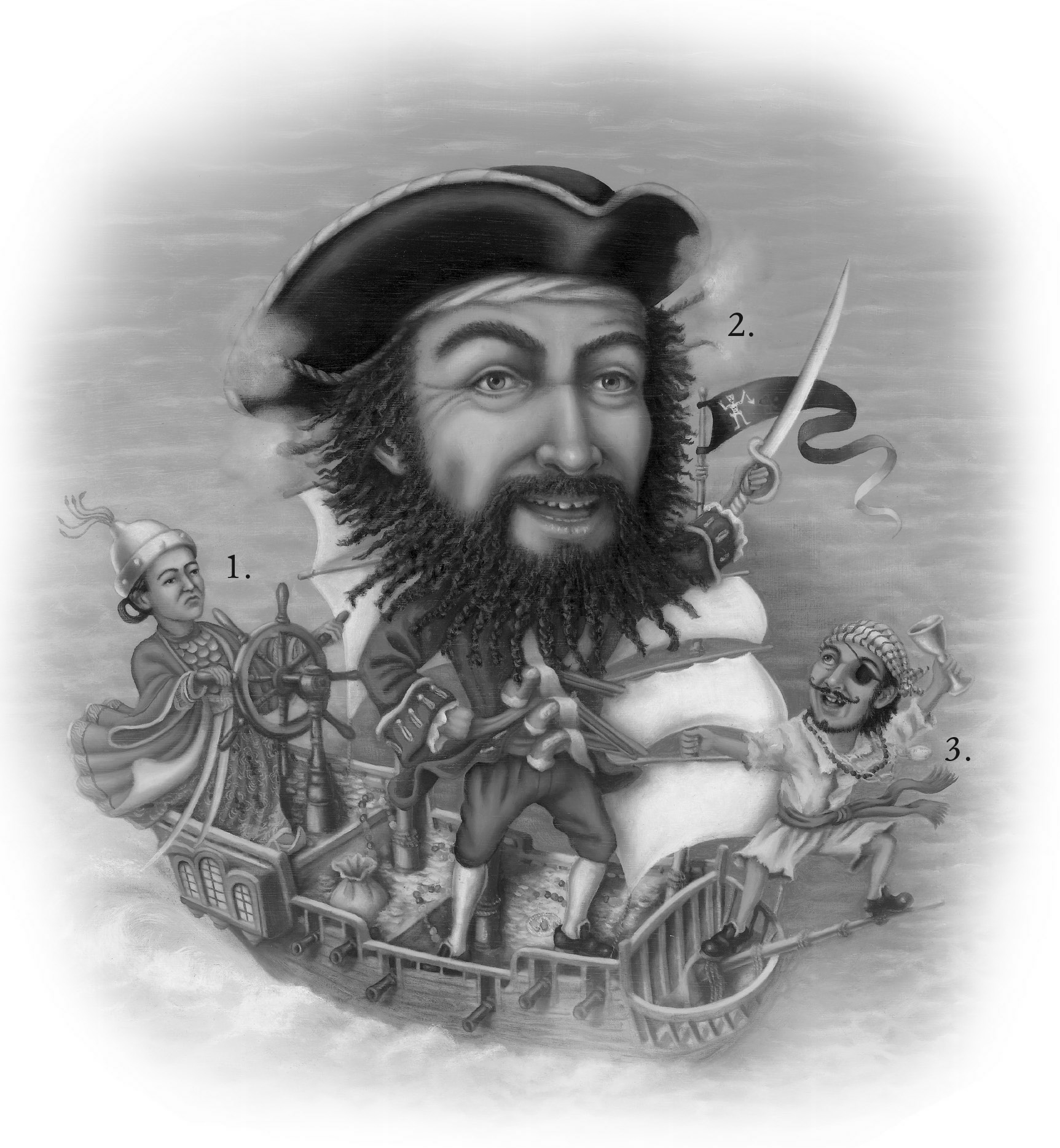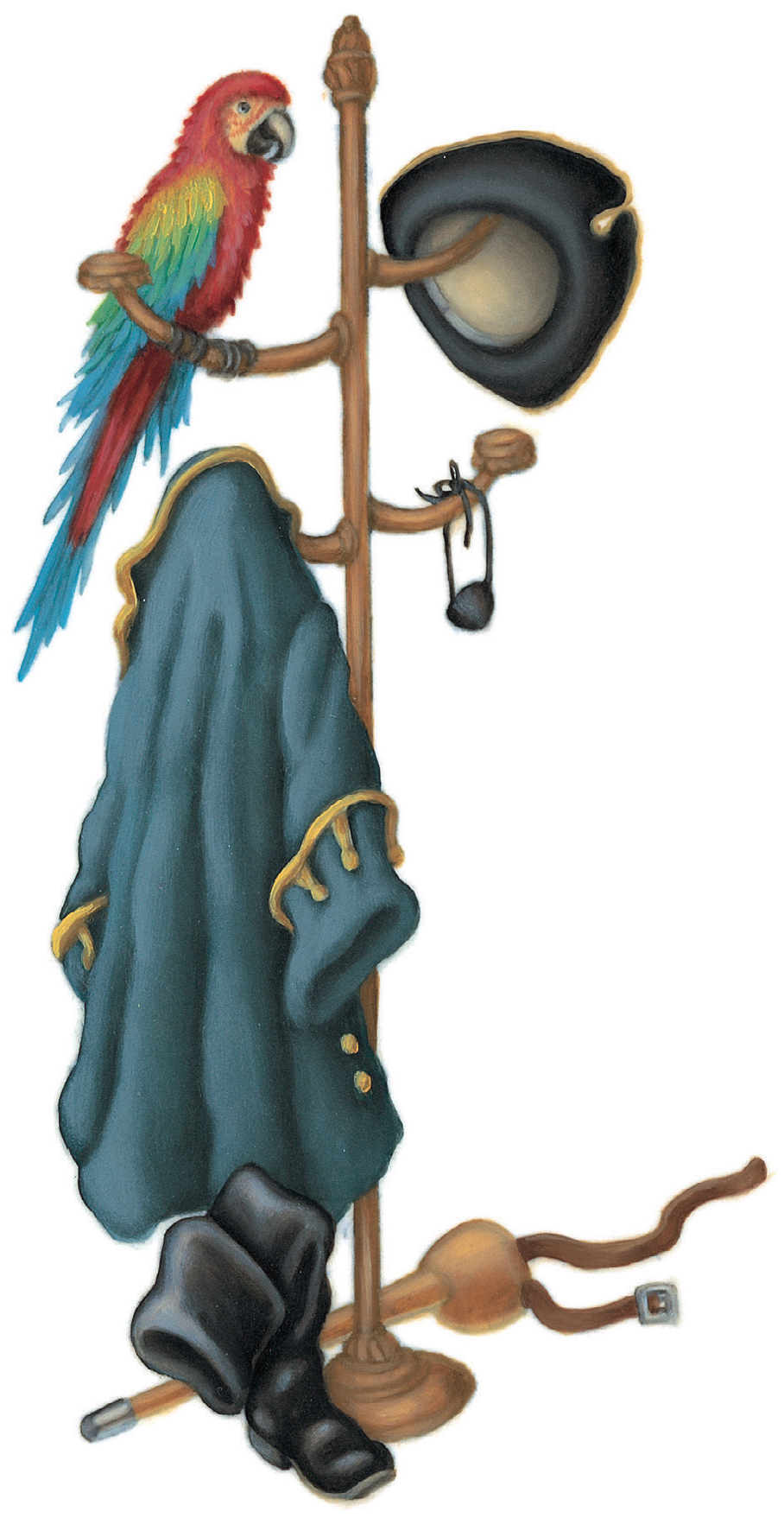
1. Madame Cheng
2. Blackbeard
3. A scurvy dog
Now and then we had a hope that if we lived and were good, God would permit us to be pirates.
M ARK T WAIN
Thanks to Christine Kettner, Regina Roff, and Sara Gillingham for their expert design work, and to Darlene Mott of the Sam Houston Regional Library and Research Center for helping with information about Jean Laffite.
K.H.
Text copyright 2010 by Kathleen Krull
Illustrations copyright 2010 by Kathryn Hewitt
All rights reserved. Originally published in hardcover in the United States by Harcourt Childrens Books, an imprint of Houghton Mifflin Harcourt Publishing Company, 2010.
For information about permission to reproduce selections from this book, write to or to Permissions, Houghton Mifflin Harcourt Publishing Company, 3 Park Avenue, 19th Floor, New York, New York 10016.
www.hmhco.com
The illustrations in this book were done in oil paint on Arches paper.
The Library of Congress has cataloged the hardcover edition as follows: Krull, Kathleen.
Lives of the pirates: swashbucklers, scoundrels (neighbors beware!) / by Kathleen Krull; illustrated by Kathryn Hewitt
p. cm.
Includes bibliographical references.
1. PiratesBiographyJuvenile literature. I. Title.
G535.K78 2010
910.45dc22 2009019296
ISBN: 978-0-15-205908-8 hardcover
ISBN: 978-0-544-10495-2 paperback
eISBN 978-0-547-48793-9
v1.0717
For Katherine Thomerson, the original pirate queen of the Frugal Frigate, who inspired us, and for Jeannette Larson, who guided the pirates into harbor.
K.K. AND K.H.
Introduction
A S SOON AS ships started sailing, people popped up to rob them. Fleeing their land-locked lives, pirates sailed the seven seas for adventures in stealing. Think outlaws. Think criminals. Violent, hairy, crude, and rude. And not all of them were men.
These were rebels, but with a causeflouting authority, living lives as free as the wind, challenging unfair rules. (Can it be coincidence that so many pirate ships have revenge as part of their name?) True, they were robbers, but they were often underdogs as well, fighting against societys laws, armies and navies, and whole governments. They were bullies but also team players, governed by their own democratic rules, surviving danger in exotic island locations.
No role models here. Several did play a part in world history, but mostly these were daring and dangerous criminals who made scant contributions to civilization, unlike many famous musicians, artists, and writers. And yetaided by the flow of entertaining pirate-themed books and movieswe continue to be fascinated with pirates, usually thinking of them in a romantic, idealistic way.
But what were they like as real people? Alas, except for the dates of their executions, hard information is difficult to come by. Usually running from the law, pirates avoided publicity. Most didnt have marriage ceremonies, own houses, pay taxes, or take notes. Essentially homeless, they didnt often have next-door neighbors who might have tattled. Respectable scholars, past and present, have tended not to devote their time to pirate research.
Instead, far from the sea, writers with brawny imaginations have sat at their desks, spinning pirate stories and embellishing them for dramatic effect. Thats why we have many more myths and legends than reliable facts about pirates.
One of the two greatest myths about pirates is that they were likable swash-bucklers with a colorful way of talkingthat image comes from Hollywood. We do know that real pirates were not all alike. Most did swear a lot. But which one got loot by sneaking her hand under the mattresses of sleeping captains? Who made his crew drink their own urine? Which one spent his days on deck wearing pajamas? Which one patiently pulled a parasitic worm out of his legall two feet of it? What was the oddest thing about our hairiest pirate? Who kept her pirate ship tethered to the bedpost in her castle? Who personally led his crew in religious services twice a day? Who provoked the most mutinies against him? And which pirate sprinkled her troops with garlic water before raids?
The second myth about piracy is that it ended centuries ago. In fact, it continues to this day, mostly in areas where crushing poverty coexists with unpoliced oceans. There are hundreds of pirate attacks on ships every year, especially around the Philippines, Indonesia, parts of South America, Nigeria, and Somalia. Now the targets are often oil and gas tankers or ships carrying drugs. We see todays pirates as thieves and murderers on the high seasand if they operate out of political or religious beliefs, as terrorists.
Yet pirates from centuries past will always capture our imagination. Here, presented chronologically, as factually as possible (but mentioning the more credible rumors), are the lives of some twenty men and womena gallery of villains, a journey through spectacular geography, and a window into world history.
Kathleen Krull
A Nautical Chart of Notorious Pirates
A C ASE of C OLD F EET ?
Alvilda
M ID -400s
Scandinavian princess-turned-pirate
A LVILDA was a wild young princess of the Goths, an East Germanic tribe that lived in what is now Sweden. Her father, king of the Goths, arranged an excellent marriage for her to Prince Alf of Denmark. Apparently Alvilda was unenthusiastic. She ran away and became a pirate instead.
Leaving behind cozy royal robes of fox and squirrel, she dressed in mens clothes, with cold armor and a helmet. Forgoing fancy meals of whale or seal meat with berries or hazelnuts, washed down with wine or beer, she lived a harsh life on her ship. She recruited other noblewomen seeking adventure, and as a gang they raided vessels along the icy Atlantic coast. After capturing a ship whose captain had died, Alvilda took over the crew and commanded equal numbers of men and women.
Prince Alf, not taking the hint, decided to get his own ship and go pirate-hunting. After his ship followed a suspicious vessel into the Gulf of Finland, dangerous with ice, a bloody battle erupted. His men surged aboard. Alf ordered the captain to be brought before him. He removed the captains helmet. Behold, it was Alvildajust as he had hoped. He immediately proposed again, and this time she accepted. Alvilda retired from piracy, had a daughter, and ended up as queen of Denmark.
She may or may not have actually existed. Her story was recorded by a monk named Saxo Grammaticus, who wasnt fussy about fact or fiction in his History of the Danes in the Middle Ages. Women of Alvildas era were tough, with much authority. If Saxo Grammaticus made the story up, he may have intended to warn women against straying from their proper role: staying home and being pretty.
















